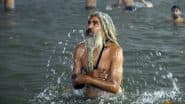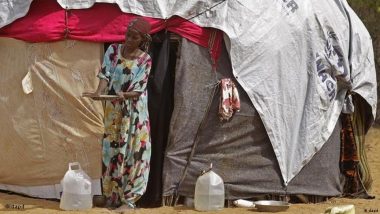The French medical charity Medicine San Frontiers (MSF) has warned of a looming health crisis in Kenya's sprawling Dadaab refugee complex. The camp hosts nearly 300,000 refugees from Somalia and neighboring countries.According to WHO, as of March 2023, Kenya had recorded more than 7,800 cholera cases and over 127 deaths. In addition, the outbreak, which began in October 2022, has seen more than 2,700 occupants of the Dadaab camp contract gastrointestinal illness.
One of the satellite complexes, Dagahaley, has been most affected accounting for about 1,100 infections alone.
"We have already seen the worst cholera outbreak in five years and the risk of other epidemics breaking out is high," MSF Country Director Hassan Maiyaki told DW.
"If this occurs, it would outstrip medical capacity in the camps, with potentially catastrophic consequences. Maiyaki warned.
Poor sanitary conditions at the camp
Some factors that have exacerbated the conditions include poor sanitary conditions within the camps, influx of refugees, overstretched resources, and dwindling donor funds.
Dr. Kapil Sharma, a medical doctor who is the project coordinator at MSF Health in Dadaab, blamed the seventh-month-long cholera outbreak on the camp's unhygienic conditions. "One of the main reasons for cholera as we all know is poor sanitary situation," Sharma told DW, adding that the camp also lacks access to latrines.
"There is rampant open defecation in the camp, and less than 50% of the people have access to the latrines, so these are all compounding factors for this outbreak to increase."
Call to improve camp conditions
The medical practitioners in the area are now urging for improvement in water, sanitation, and hygiene to contain the outbreak.
Kenya's Ministry of Health and other humanitarian agencies have conducted a cholera vaccination campaign since February.
They also conducted health promotions, but medical practitioners in the area say it was insufficient. "More needs to be done in terms of water, sanitation and hygiene for this population," Kapil said, calling on more substantial support from the international community to organizations providing water, hygiene, and sanitation services in the camp.
Influx of refugees from neighboring countries
According to the UN Refugee Agency (UNHCR), Dadaab camp hosts over 43% of Kenya's refugee population.
The humanitarian crisis in the countries surrounding Kenya has led to a further growth in the number of refugees at the Dadaab camp. In 2022 alone, about 100,000 refugees came into the country, with 67,000 new refugees finding their way to Dadaab.
The new arrivals have put more pressure on the camp's capacity. "The camps are already overstretched, and the humanitarian conditions there are already at its limit," Dr. Nitya Udayraj, MSF Medical Coordinator in Kenya, told DW.
Tens of thousands of unregistered refugees
Presently there are over 124,000 refugees yet to be registered but still within the Dadaab refugee complex.
The drought that has plagued the Horn of Africa region has not helped either, as most of those coming into the camp are either malnourished, tired, or susceptible to the disease. In addition, the worsening drought in Somalia and the crises in the neighboring Sudan, South Sudan, and Ethiopia have all forced some to seek refuge in Kenya.
Out of a holding capacity of 35,000 people, the satellite camp of Dagahaley hosts about 140,000 refugees, and more continue to stream in.
Few doctors for thousands of people
The medical doctors are not only serving the people within the camp but an extra 14,000 people within the host community, who also require the services of the medical teams. This has left the medical facilities overstretched and almost running on empty if help comes in late.
"MSF calls on the international community, donors and aid agencies to respond urgently to the unfolding crisis in Dadaab, taking immediate action to address the alarming sanitary conditions and prevent the further spread of disease," Maiyaki said.
The global economic crisis has also played a part in the worsening of the situation at the camp. As a result, many aid organizations have delayed remitting funds.
"What is important is the allocation of appropriate resources for organizations responsible to provide these services as fast as possible," Kapil said.
Kenya plans new refugee camp
The Kenyan government has announced plans to reopen a fourth camp, Ifo 2, to accommodate new arrivals and alleviate the strain on resources in the existing camps.
"MSF calls on the government of Kenya and the UNHCR to find durable solutions for the refugees confined within the camps at Dadaab," Maiyaki said.
Even as MSF calls on the government to fulfill the promise urgently, other interventions like water distribution and sanitary facilities supply to the refugees have been in top gear to prevent the further spread of the disease.
"We are providing 50,000 liters of water to the outskirts population of 9,000 people," Kapil said, stressing that the organization had facilitated the construction of 150 latrines for the population."
We have also provided plastic sheeting and maps to the 1,000 families."
The MSF health practitioner said he remains optimistic that the situation can improve. "I feel really very sad when I see this number which has really increased over the last few months," Kapil said, calling on all stakeholders to join hands and provide essential human services "to prevent people from contracting these disease which should not happen actually."
Edited by: Chrispin Mwakideu
(The above story first appeared on LatestLY on Jun 05, 2023 06:40 PM IST. For more news and updates on politics, world, sports, entertainment and lifestyle, log on to our website latestly.com).













 Quickly
Quickly

















